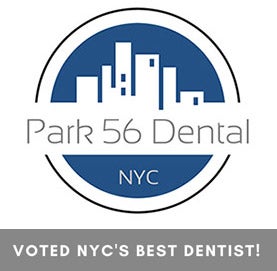-
Should You Use Mouthwash?
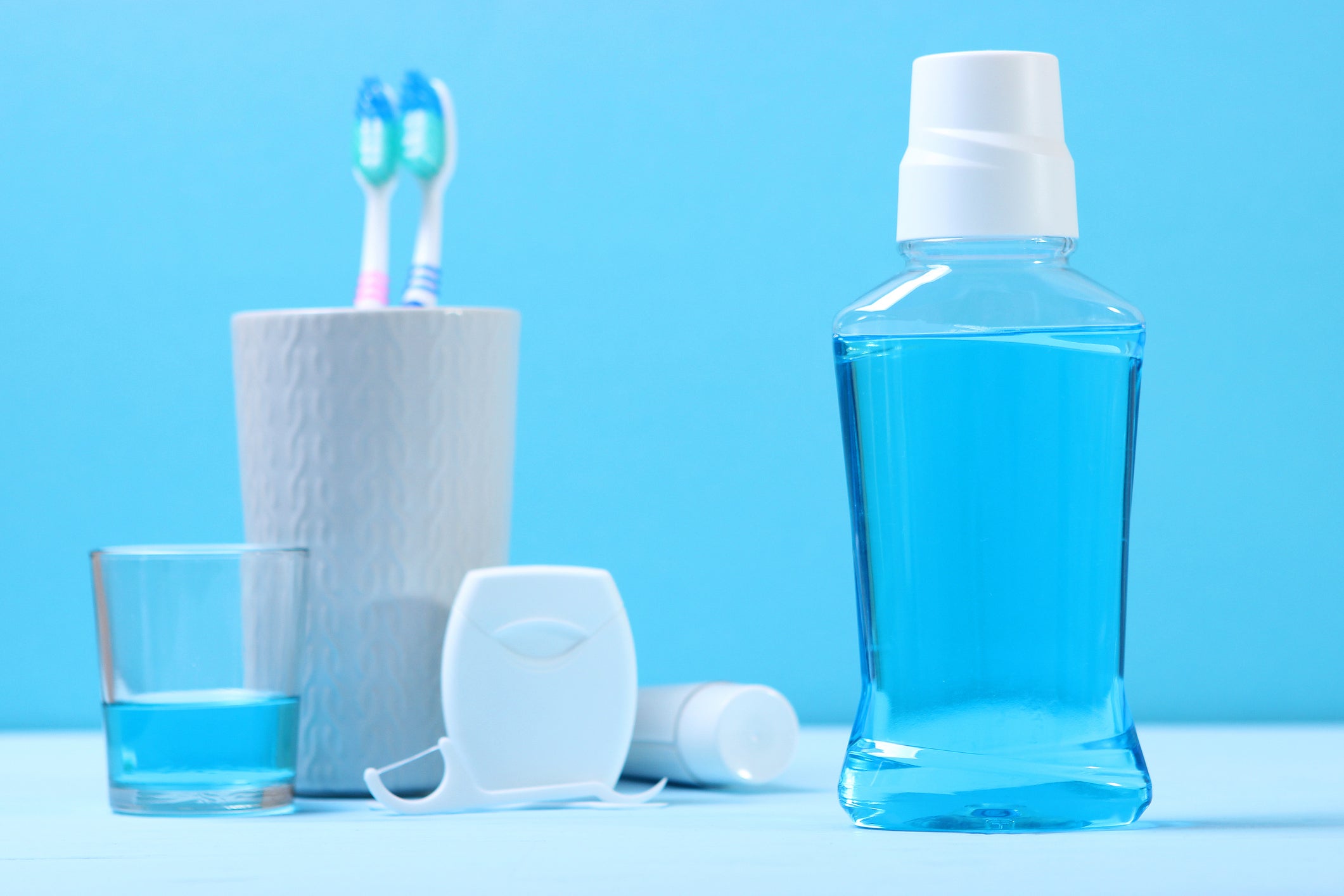
When you picture the basics of good oral care, you probably think of brushing and flossing. What about using mouthwash? Many people include this optional step in their daily teeth-cleaning routine. Should you join them?
Benefits of Mouthwash
Here are the top reasons to use mouthwash daily.
- Freshen your breath: Antiseptic mouthwash kills bacteria that cause bad breath while leaving a minty flavor behind. If you struggle with chronic bad breath, be aware that using mouthwash won’t cure the underlying cause. Speak with your dentist about tips to combat the problem at the source.
- Remove biofilm: Your teeth comprise only 25 percent of the total surface area in your mouth. Even after you brush and floss, a thin, slimy layer of bacteria may linger on your tongue, cheeks, and the roof of your mouth. Rinsing with mouthwash minimizes this biofilm, leaving your mouth cleaner than brushing and flossing alone.
- Prevent plaque buildup: Some mouthwash products are formulated to help prevent plaque from building up between your teeth and along the gum line. This sticky substance is teeming with bacteria, so preventing it from forming is the best defense you have against cavities and gum disease.
- Strengthen tooth enamel: Mouthwash with fluoride additives can help make your teeth stronger and more plaque-resistant.
- Prevent staining: Hydrogen peroxide mouthwash has minor whitening capabilities when used as directed. Most importantly, it prevents new stains from setting in, making it an effective smile maintenance product following professional teeth whitening.
How to Use Mouthwash
To maximize the benefits of mouthwash, make sure you use it correctly. Follow the directions on the bottle with these additional tips in mind:
- Brush and floss first: Mouthwash isn’t a substitute for brushing and flossing. Perform these steps first to remove food particles and plaque.
- Use the proper amount: Pour mouthwash into the plastic cup that doubles as a lid, using the amount recommended on the bottle. This is typically between 3 and 5 teaspoons.
- Time yourself: Empty the cup into your mouth and begin swishing it between your teeth. Watch the clock or count in your head to the recommended time, which is usually 30 to 60 seconds. As you do, rinse the cup and place it back on the bottle.
- Spit: At the end of the allotted time, spit the mouthwash into the sink. Avoid swallowing.
- Don’t rinse: Mouthwash continues to work after you spit it out, so to avoid diluting its cleaning and tooth-strengthening benefits, don’t rinse with water after using mouthwash. Also, avoid eating or drinking for 30 minutes or as recommended on the bottle.
Need help selecting the ideal mouthwash for your needs? Speak with the expert team at Park 56 Dental. Besides informing your at-home oral care routine, we also offer preventative and restorative services to keep your smile looking healthy and bright. Call us today at (212) 826-2322 or contact us online for more tips or to schedule an appointment at our NYC office.
-
Traditional Braces vs. Invisalign
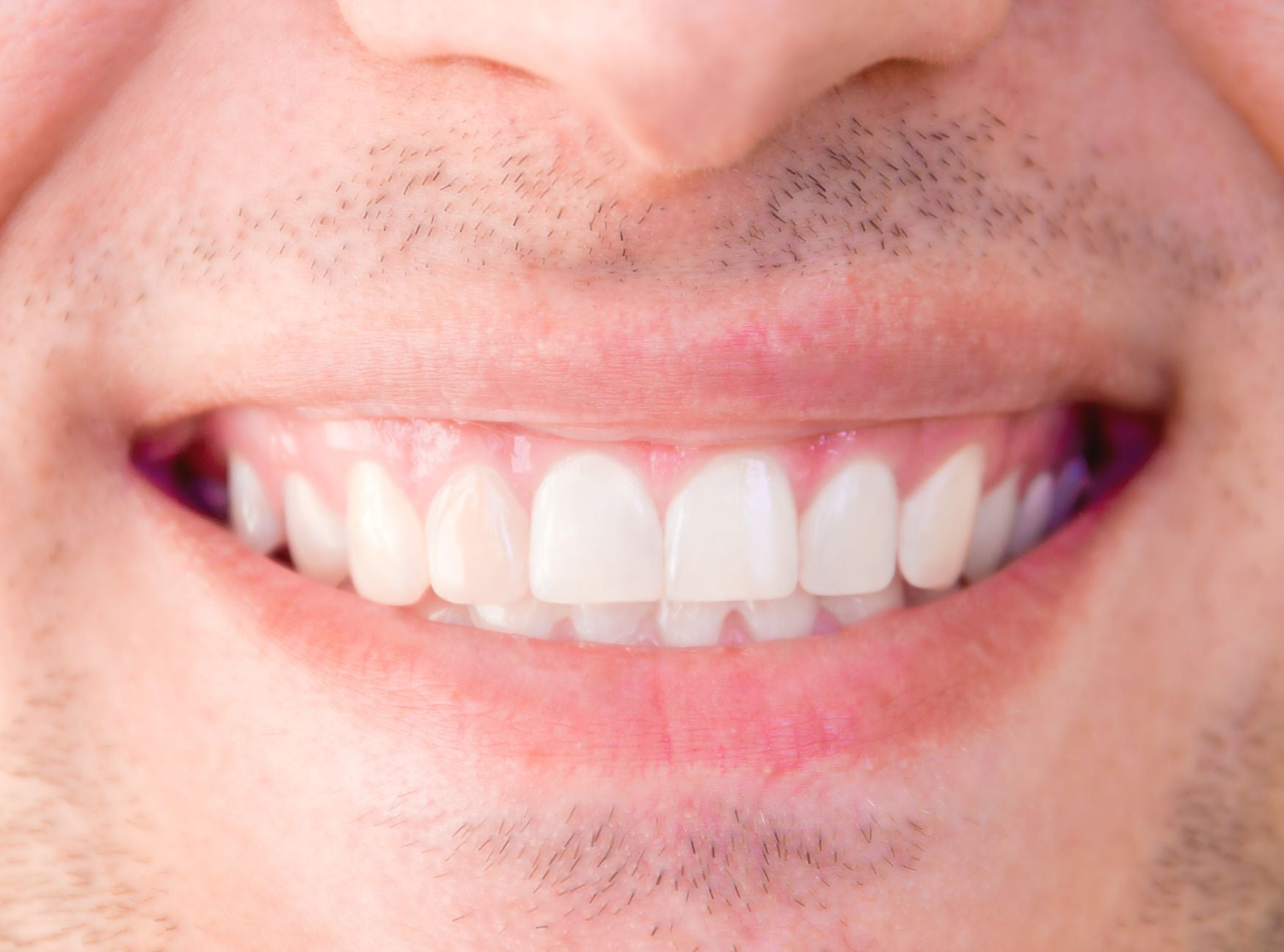
Are you looking to improve your smile with straighter teeth? You have two primary options—traditional braces and Invisalign. Compare these teeth-straightening methods to help you decide which one is the best choice for you or your child.
Traditional Braces
When most people think of braces, they picture the metal brackets and wires of traditional braces. These are glued to your teeth and cannot be removed. Here’s what to expect from this option:
- Aesthetics: While they never fully disappear, traditional braces are available with enamel-colored components to make them less noticeable. Teens may also enjoy making a statement with brightly colored brackets and wires.
- Treatment time: The average patient needs braces for two years, though this varies greatly depending on the individual’s needs.
- Cleaning: Brushing and flossing with braces is more difficult and time-consuming, leading to an increased risk of discoloration and cavities.
- Comfort: Brackets and wires are notorious for causing lip and tongue sores.
- Effectiveness: Traditional braces are often the best choice for complex issues, such as correcting back bite issues, rotating canines or premolars, and moving teeth vertically.
- Lifestyle: Patients who wear traditional braces must follow certain dietary limitations to avoid damaging the brackets and wires with sticky, chewy, or hard food. Traditional braces are also not ideal for anyone who plays rough contact sports.
Invisalign
The premise behind Invisalign is to provide a more discrete teeth-straightening option. The dentist uses an impression of your mouth to produce BPA-free plastic aligners, which you wear for two weeks before moving to the next set. Here are some qualities of Invisalign to consider:
- Aesthetics: Invisalign aligners are virtually invisible. Unless you tell people, it’s unlikely anyone will notice you’re wearing them.
- Treatment time: The average patient completes Invisalign treatment in six to 18 months, depending on their needs. To maintain your treatment schedule, be sure to wear your aligners for 22+ hours per day, only removing them to eat or drink anything other than water.
- Cleaning: The aligners must be brushed and rinsed daily to avoid harboring germs. While this adds an extra step to your oral care routine, the ability to brush and floss your teeth like usual is a huge benefit.
- Comfort: Invisalign has a smooth surface that feels comfortable on your cheeks, tongue, and gums.
- Effectiveness: Standard Invisalign is best for treating relatively simple issues, such as overcrowding and bite problems. However, with the addition of clear buttons, it’s possible to achieve more complex corrections.
- Lifestyle: Because you remove the aligners before eating, you don’t have to give up your favorite foods. Of course, this requires extra care to avoid losing your aligners. We also recommend brushing your teeth after every meal to prevent staining the plastic.
To learn more about traditional braces vs. Invisalign, please call Park 56 Dental at (212) 826-2322 or contact us online. We proudly offer Invisalign in NYC, the modern way to straighten your teeth and improve your smile.
-
What to Look for When Choosing a Dentist

Your dentist should be a trusted professional you can rely on. The goal is to look forward to your dentist visits, not dread them. This is why finding a dentist that “clicks” with you and your family is such a vital part of ensuring excellent dental care. Here’s what to look for if you’re searching for a reliable family dentist in NYC.
- Insurance coverage: If you have dental insurance, it’s most cost-effective to choose an in-network dentist that accepts your plan. Check your insurance provider’s website or contact local dentists for more information.
- Positive patient feedback: Online reviews provide an unbiased look at overall customer satisfaction ratings. Steer clear of any dentists with numerous one- and two-star reviews.
- Recommended by others: In addition to the reviews you read online, ask around for recommendations from people you trust. Find out where your family, friends, neighbors, and coworkers go, as well as what they like or dislike about their dentist. You can also ask for a referral from your family doctor.
- Convenient hours and location: Ease of accessibility is an important part of making dentist visits a priority. You are more likely to set routine cleanings and exams if the appointment times fit your schedule, such as early morning and Saturday hours. It’s also best if the dentist’s office is conveniently located near your home, work, or child’s school.
- Fair policies: Review each dentist’s website or call the office to find out more about their policies. Do they educate patients about their treatment options? When are payments collected? How does the dentist handle canceled or missed appointments? The right dentist should have fair policies that meet your needs.
- Updated cleaning and safety precautions: During the coronavirus pandemic, dentists and other medical professionals should follow CDC guidelines to promote an especially clean environment and reduce the spread of COVID-19. Ask any dentists you’re considering about the safety precautions they’re taking.
- Good first impression: Pay attention during your initial consultation. Is the office clean and orderly? Do the staff members treat you with courtesy and respect? Is your medical and dental history recorded and placed in a confidential, permanent file? Feeling welcome, comfortable, and cared for is a vital part of choosing the right dentist.
- Dental services that meet your needs: Not all dentists offer the same procedures. Because you can’t always predict the care you’ll need in the future, it’s best to choose a dentist with comprehensive services. This includes general and cosmetic dentistry, Invisalign, oral surgery, emergency services, sedation dentistry, and more.
Park 56 Dental is ready to meet your family’s dental care needs! We have been voted Top Dentist in NYC, with over 20 years of experience delivering the highest level of dental treatment in a luxurious, spa-like environment. To learn more about our team and everything we have to offer, please call (212) 826-2322 and schedule an initial consultation with us today.
-
How to Take Care of Your Teeth between Dental Visits

The importance of professional teeth cleanings cannot be understated. Seeing your dentist every six months promotes healthy teeth and gums by detecting and treating dental problems early. Still, there are plenty of things you can do at home to take care of your teeth between dental visits. Here’s what we recommend to prevent tooth and gum problems before they start.
Use Proper Tooth Brushing Techniques
Make a habit of brushing your teeth at least twice a day, preferably 30 to 60 minutes after every meal. Brushing removes plaque and acids from your mouth while leaving a fresh, minty scent behind. For the best results, follow these techniques:
- Hold your toothbrush at a 45-degree angle along the gum line.
- Brush with short, circular motions.
- Be gentle to avoid irritating your gums.
- Brush for a full two minutes.
Don’t Forget to Floss
Flossing gets between your teeth where toothbrush bristles can’t reach. Floss once a day to help prevent plaque from hardening into tartar, which can only be removed by a dental professional. It doesn’t matter what time of day you floss—just remember to do it! If you don’t like using traditional floss, try floss picks or a water flosser for the same benefits.
Rinse with Mouthwash
The third part of your daily oral care routine should be to swish mouthwash. Antiseptic or antibacterial mouth rinses are the best options for killing bacteria that cause plaque. Rinsing as recommended also helps reduce bad breath and even reverses early gum disease.
Cut Back on Soda and Added Sugar
Sugary sodas and other sweets are known to wreak havoc on your teeth. Sugar promotes bacterial growth and causes plaque to form. Even if you opt for “diet” soda, the phosphoric acid and citric acid in these drinks still eat away at your enamel, making you more prone to cavities. The occasional soda won’t cause much harm, but water is the best drink for a healthy smile. To add a little flavor, try putting fruit or mint leaves in your water.
Eat More Fruits and Vegetables
Crisp, fresh foods like apple slices, raw carrots, and celery sticks don’t just provide your body with essential vitamins and nutrients—they also act as natural tooth scrubbers, helping to cut down on plaque and stimulate your gums. Include fresh produce in every meal for a healthier smile.
Chew Sugarless Gum
While it’s ideal to brush after each meal, chewing sugarless gum is the next best thing. This increases saliva production, which helps remove lingering food particles and rebalances the pH level in your mouth. The minty flavor also helps to improve your breath.
Park 56 Dental is pleased to offer routine teeth cleanings and other dental services to help our patients smile with confidence. Visit our spa-like, patient-centered dentist office to receive the personalized, quality care you deserve. Contact us online or call (212) 826-2322 today to find out for yourself why we’ve been voted Top Dentist in NYC!
-
Everything You Need to Know About Dental Fillings

Cavities and tooth decay are common oral health problems. If left untreated, decay can spread and destroy the entire tooth. While it’s best to prevent cavities in the first place, your dentist can save a decaying tooth by giving you a filling. Here’s everything you need to know about dental fillings.
The Process of Getting a Filling
To ensure a painless procedure, your dentist first numbs the tooth and surrounding tissue using a local anesthetic. Next, the decayed portion of the tooth is removed with a drill or laser. Then, the tooth cavity is cleaned to remove residual bacteria and prepare it for the filling. If the decay reaches the tooth root, a liner made of composite resin, glass ionomer, or another material may be applied to protect the nerve.
Once the tooth is prepped, it’s time to add the filling. This part of the process varies depending on the filling material being used. For example, with tooth-colored composite resin, the material is added in layers, cured with a special light, shaped, and polished for a smooth, natural-looking finished product.
Types of Dental Filling Materials
You have several filling materials to choose from. The right fit for you may depend on the location and extent of your cavity, cost differences, insurance coverage, and your dentist’s recommendations. Here are the top options:
- Amalgam fillings: Made of mercury, silver, zinc, and other metals, amalgam is a strong, inexpensive filling. The presence of mercury scares some patients, but com declares that amalgam fillings have never been shown to cause health problems. The biggest drawback is amalgam’s metallic color, which makes it less desirable for filling cavities near the front of the mouth.
- Tooth-colored composite resin fillings: This option is extremely popular because the filling matches your natural teeth. Chemical bonding provides excellent structural support for composite resin fillings. The downside is that this material doesn’t last as long as amalgam fillings, and it’s also more expensive.
- Tooth-colored ceramic fillings: Ceramic fillings tend to last longer than composite resin, and they are also more stain-resistant. However, ceramic is relatively brittle, so some healthy tooth material may need to be shaved away to make the filling larger and more durable. Ceramic is also among the most costly dental filling materials.
- Glass ionomer fillings: This material, made of acrylic and a special type of glass, is often used as a liner to protect tooth nerves when a cavity is located below the gum line. These unique fillings release fluoride over time, which helps to prevent future tooth decay. They last about as long as resin composite fillings and are comparable in cost.
If you think you have tooth decay, don’t ignore the problem. Filling a small cavity is always easier and more affordable than waiting for the decay to spread. If you have any tooth pain, sensitivity, or discoloration, call (212) 826-2322 or contact Park 56 Dental online to schedule a checkup at our dentist office in New York City.
-
Why You Should Consider Dental Implants

Most people take their teeth for granted. However, if you lose a tooth to extensive decay or a traumatic injury, the gap in your smile may be all too apparent. Fortunately, you have options for replacing your lost tooth, including bridges, dentures, and dental implants. Here are the top reasons to restore your confident smile with fixed implants.
- Prevent your teeth from shifting: When you lose one tooth, the surrounding teeth tend to shift and fill in the space. This can throw off your bite and lead to uneven spacing or overcrowding. Having an implant placed now helps to maintain the position of your teeth so you can avoid these complications.
- Preserve your jawbone: Other tooth replacement solutions, including bridges and non-implant-supported dentures, may eventually weaken your jawbone. However, implants feature an artificial tooth root that grows into the bone, stimulating it and preventing deterioration.
- Maintain your appearance: If you’re missing multiple teeth, a significant portion of your jawbone could begin to deteriorate. Eventually, your jaw, cheeks, and lips may start to sink inward, making you look years older than you really are. The stimulation provided by dental implants keeps your jawbone healthy, so your face looks full and youthful for years to come.
- Avoid the hassle of wearing dentures: Implants are more natural-looking than dentures. As a permanent solution, implants also let you avoid the hassle and embarrassment of removing dentures to eat or sleep. You never have to worry about your implants falling out, either, which enhances your comfort and confidence. You can even brush and floss implants with the rest of your teeth, unlike dentures, which require special soaking and cleaning.
- Preserve the structural integrity of your remaining teeth: Bridges involve shaving down the teeth on either side of the gap and placing crowns to support the artificial tooth. If these teeth are healthy, you may hesitate to damage their structural integrity. Implants are self-supporting, so the surrounding teeth remain untouched.
- Enjoy a long-lasting solution: Implants are capped with custom-made porcelain crowns designed to look, feel, and function exactly like a natural tooth. These artificial crowns are known to last for decades with proper care, allowing you to smile confidently for many years to come.
- Suitable for more and more candidates: You may have heard that not everyone is a good candidate for implants. However, dental restoration technology has evolved tremendously in the past 10 years. This means, even if you didn’t qualify for implants in the past, you might want to speak with your dentist about the latest options available.
The dentists at Park 56 Dental can help you compare all your tooth-restoration options, including dental implants in NYC. If you have a gap in your smile or are otherwise dissatisfied with the condition of your teeth, give us a call at (212) 826-2322 or contact us online to schedule a consultation. We would be happy to answer any questions you have about cosmetic, restorative, and general dentistry.
-
A Step-by-Step Guide for Proper Flossing
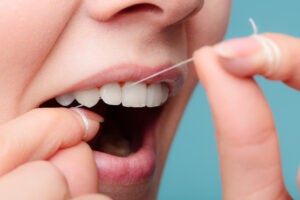
The benefits of flossing include superior plaque removal, healthier gums, and a lower chance of cavities. Perhaps you intend to add this good habit to your oral care routine, but you’re not sure how to floss. Follow this step-by-step guide for the best results.
How to Floss Your Teeth
- Break off 18 inches of floss from the spool and wrap the ends around your middle fingers.
- Grasp the floss with your thumb and forefinger to secure it better and prevent squeezing your middle fingers.
- Guide the floss between two teeth at a time, being careful not to snap it against your gums, as this could cause trauma to the soft tissue.
- Glide the floss up and down, arching it into a c-shape so it rubs against one tooth and then the other. Extend the floss down below the gum line to remove plaque buildup here as well.
- Gently remove the floss from between your teeth.
- Repeat this process throughout your entire mouth. Be sure to floss behind your back molars as well.
- Every few teeth, wipe the collected debris onto a facial tissue and shift to a clean section of floss.
- Dispose of the used piece of floss in a trash can, not the toilet.
If your gums bleed when you floss, this could be a sign of gum disease. Flossing strengthens your gums, so keep up the habit, and the bleeding should subside after about two weeks.
Flossing with Braces
Because food and plaque are more likely to become trapped under bands and wires, flossing when you have braces is very important. Special stiff floss makes it easier to thread under your braces so you can pass it between your teeth. You may also opt for a flossing alternative to complete the task more quickly.
Alternatives to Traditional Floss
If you dread flossing because you have braces, or you simply don’t feel coordinated enough to do it properly, try an alternative to traditional dental floss. Here are your options:
- Dental floss picks are the closest equivalent to regular floss. They consist of a bit of floss stretched between a u-shaped piece of plastic. A small handle lets you comfortably hold the floss pick without having to wrap floss around your fingers.
- Interdental picks feature short rubber tines attached to a small handle. The increased size of the flossing material makes it easier to clean more thoroughly between larger gaps or areas with receding gums.
- A water flosser is a mechanical device that sprays a fine jet of water between your teeth to remove food particles and plaque quickly and easily. It’s a great choice for people who hate the feeling of floss scraping against their teeth.
Talk to your dentist about which flossing product may be best for you.
Ready to discuss your oral care routine? Have a concern about flossing every day? Please contact Park 56 Dental at (212) 826-2322 for advice from a leading NYC dentist.
-
How Sugar Affects Your Teeth

Everyone knows sugar is bad for your oral health, but few people know why. Once you understand how sugar affects your teeth, you may be less tempted to indulge in Halloween candy and other sweets during the holidays.
How Cavities Form
Your mouth is home to hundreds of different types of bacteria. Some are beneficial, but others cause cavities. When you eat sweets, some of the sugar lingers on your teeth. Harmful bacteria eat these leftovers and leave acids and plaque behind.
Without proper oral hygiene, the accumulation of acid lowers the pH balance in your mouth. This causes demineralization, or the removal of minerals from the hard outer surface of your teeth known as enamel. As your enamel erodes, holes form in your teeth. The damage eventually progresses deeper and deeper until it causes pain and tooth loss.
Reducing the Effects of Sugar on Your Teeth
A constant battle is raging in your mouth between bacteria and tooth enamel. Fortunately, you have an effective weapon on your side—saliva. In addition to breaking down food as it enters your digestive system, saliva helps to remineralize your teeth with calcium, phosphates, and other minerals.
It’s possible to fill cavities and restore your smile, but it’s best to avoid tooth decay in the first place. Here’s how to give your saliva a fighting chance against the onslaught of sugars and acids in your mouth:
- Limit your sugar intake by eating less Halloween candy and other sweets during the upcoming holiday season.
- Brush your teeth after eating sugary food. If that’s not possible, chew sugarless gum or swish with water to wash away any lingering sugar in your mouth.
- Satisfy your sweet tooth with xylitol, a natural sugar alcohol that has the same sweetness as sugar but is not a viable food source for bacteria.
- Limit between-meal snacks to give your saliva a chance to wash away acid and repair your teeth before the next meal.
- Don’t eat or drink anything sugary between brushing your teeth and going to bed. Likewise, never send your child to bed with juice, which introduces sugar to the mouth just when saliva flow decreases during sleep.
- Consider dental sealants, a product that covers the chewing surfaces of a child’s molars to protect this rough, pitted area from bacteria.
- Seek out fluoride. This mineral helps prevent tooth decay and can even reverse cavities in their early stages. Drink fluoridated water, brush with fluoride toothpaste, and ask about fluoride treatments at your next dentist visit.
The best way to avoid cavities is to combine at-home oral hygiene tips with routine teeth cleanings at Park 56 Dental. Our experienced dental team will check on the condition of your smile, clean and polish your teeth, and address any cavities that are developing before they grow any larger. To schedule your next appointment, please contact Park 56 Dental online or call our NYC dentist today at (212) 826-2322.
-
How You Can Get the Smile You Want with Veneers
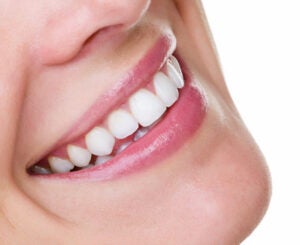
Your smile is one of the first things people notice about you. If you have flawed teeth, you may be all too aware of this, smiling with closed lips or covering your mouth with your hand to hide them. What if you could smile confidently? With veneers, you can!
A veneer is a thin, custom-made shell that bonds to the front of your tooth. It’s made of tooth-colored material, such as porcelain, which is carefully matched to your existing teeth for a completely natural finish. Here’s how you can get the smile you want with veneers.
Straighten Crooked Teeth
Veneers aren’t meant to replace orthodontic treatment, but if you have crooked teeth, this could be an option. An oral exam and digital X-rays are the best way to determine if braces or veneers will improve your smile most effectively over the long term.
Fill in the Gaps
You want your teeth to sit snugly side-by-side. If there are gaps between some of them, your mouth may appear neglected and be more vulnerable to cavities and gum disease. You could bring your teeth together manually with braces or a retainer, but if the gaps are caused by small teeth rather than poor alignment, veneers could be the superior solution.
Correct Discoloration
Have you tried to whiten your discolored teeth without success? While professional in-office teeth whitening can remove surface stains, it can’t touch deep stains or discoloration caused by traumatic tooth injury. Fortunately, veneers can! As long as your teeth are healthy, you can cover them with custom-made veneers in a sparkling shade of white.
Hide Imperfections
Is one of your front teeth longer than the other? Are you self-conscious about a snaggletooth? Maybe one or two of your teeth are smaller than the rest. Whether uneven, worn, or oddly shaped, veneers can almost certainly hide your imperfect teeth.
Smooth out Chipped Teeth
Tooth enamel is the hardest material in the body, but it’s not impervious to chipping. Veneers restore your appearance by smoothing out chips, making them invisible. Anyone who sees you smile after having this restoration work performed will only notice beautiful, healthy-looking teeth.
The Veneer Procedure
When you set an appointment at Park 56 Dental to discuss your cosmetic dentistry questions, we’ll show you what veneers can do. If you decide to move forward, we’ll begin the restoration process by taking impressions of your teeth. Custom veneers are made based on these impressions for a precise fit.
On the day of your fitting, the dentist will prepare your teeth by shaving them down slightly so the veneers align with your natural teeth. Next, the veneers are attached using dental cement. A curing laser speeds up the drying process and ensures a permanent bond. After a final cleaning and polishing, you’ll be left with the beautiful smile you’ve always wanted!
To learn more about hiding flawed teeth with veneers, or to schedule a consultation with our NYC dentist, please contact Park 56 Dental at (212) 826-2322.
-
How Poor Dental Hygiene Affects Your Overall Health
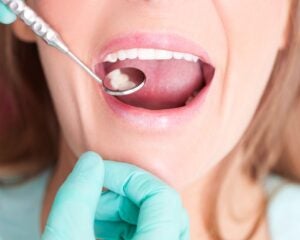
You probably know that if you don’t take good care of your teeth and gums, you increase your risk for cavities, gum disease, and bad breath. But are you aware that oral health can affect the rest of your body? Connections have been discovered between decreasing oral health and many seemingly unrelated diseases and conditions. Learn more about this connection here, as well as how to maintain a healthy mouth and body.
Heart Disease
When your gums are damaged and infected because of gum disease, oral bacteria can enter your bloodstream directly through this soft tissue. This allows bacteria to travel to your heart, where clots can form as a result. A condition called endocarditis, or inflammation of the inner lining of the heart, may also develop.
Chronic gum inflammation also emits chemicals that can cause atherosclerosis, or the clogging and hardening of artery walls. This health condition blocks blood flow, increasing the risk of heart attack and stroke.
Dementia
The harmful bacteria that grow when you have gum disease don’t only travel to your heart—they also enter the brain, where they kill brain cells and lead to memory loss. This may increase the chance of developing dementia or Alzheimer’s disease.
Respiratory Infections
It’s possible to inhale oral bacteria that form because of gum disease. Once in the lungs, the bacteria can cause infections, pneumonia, acute bronchitis, and even chronic obstructive pulmonary disease (COPD).
Diabetes
Gum disease and diabetes are a dangerous combination. If you are diabetic, you are more susceptible to infections, including gum disease. Then, if you have gum disease, this heightens your risk for high blood sugar, which can lead to diabetes or worsen your existing symptoms. And if you have both conditions at once, you have a higher chance of developing kidney disease.
Rheumatoid Arthritis
Oral bacteria from gingivitis can increase inflammation throughout the body. This makes people with gum disease more likely to develop rheumatoid arthritis, a painful and debilitating inflammatory condition.
Pregnancy Complications
Hormonal changes during pregnancy increase the risk of oral health problems. Then, developing gingivitis or periodontitis can lead to premature birth, low birth weight, and other health issues for mother and baby.
Maintain Good Oral Hygiene to Protect Your Overall Health
The message is clear: good oral hygiene can do more than preserve your teeth and gums—it can keep your whole body healthy. To discourage the problems that often accompany gum disease, remember to follow these tips:
- Brush your teeth morning and night with fluoride toothpaste.
- Floss daily.
- Chew sugarless gum after meals.
- Avoid cigarettes and chewing tobacco.
- Eat a well-balanced diet and limit your sugar intake.
- Seek fluoride treatment from your dentist.
- Schedule teeth cleanings and dental checkups every six months.
If it’s been a while since your last dentist visit, set an appointment at Park 56 Dental by calling us at (212) 826-2322. We’ll check the status of your teeth and gums and recommend a treatment plan if necessary.
RECENT POSTS
categories
- Uncategorized
- Cosmetic Dentistry
- Veneers
- Healthier Teeth
- Teeth Whitening
- Dental Health
- Video
- Dental Emergencies
- Invisalign
- Dental Implants
- Root Canal
- Sedation Dentistry
- Infographic
- Dental Crowns and Bridges
- Dental Anxiety
- Gum Disease
- COVID-19
- Bad Breath
- New York Dentist
- Cut out sugar
- General Dentistry
- Oral Health
- Oral Cancer
- Dry Mouth
- Gum Health
- Toothache
- Dental Sealants
- Cavities
